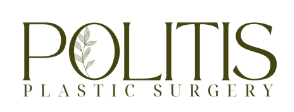Key Takeaways:
- Patients should wait six weeks before resuming rigorous activities post-breast augmentation.
- Light activities like walking are encouraged during the first two weeks to promote healing.
- Gradual reintroduction of low-impact and upper body exercises can begin from weeks three to six.
Recovering from breast augmentation surgery brings up many questions, especially concerning how soon you can return to your workout routine. For those who prioritize fitness, understanding the right timeline and activities is crucial to ensure a safe recovery. As a plastic surgeon in Tampa, FL, I often guide my patients through this process to balance healing with staying active.
The Importance of a Gradual Return
Week 1-2: Focus on Healing and Light Activity
During the initial week or two after breast augmentation, the focus should be on rest and healing. However, this doesn’t mean you should be completely sedentary. Light activities like taking short, gentle walks are encouraged. These walks can be around your neighborhood for about 20 minutes, two to three times a day. Walking promotes circulation, which is essential for the healing process, and helps prevent complications such as blood clots.
Week 3-4: Introduction of Low-Impact Exercises
Once you reach weeks three and four, you can begin incorporating low-impact activities. Options such as using the elliptical machine, stationary biking, or the StairMaster are ideal. These exercises allow you to be active without putting too much strain on your upper body and surgical sites. It’s important to listen to your body and avoid pushing yourself too hard during this phase.
Week 5-6: Gradual Upper Body Exercises
By weeks five and six, you can start introducing more upper body exercises. Begin with light weights and resistance bands. Exercises should focus on low resistance and high repetitions to avoid putting excessive stress on your chest area. Activities such as light arm curls, shoulder presses, and gentle band work are suitable. Ensure you stop immediately if you experience any pain or discomfort and consult with your surgeon if needed.
Why the Six-Week Wait?
The six-week mark is significant because it typically represents the time needed for the body to form a strong healing foundation. Rushing back into intense workouts can jeopardize the healing process, potentially leading to complications like implant displacement, increased swelling, or delayed recovery.
Nutrition plays a vital role in recovery. During the first few weeks, focus on consuming a balanced diet rich in proteins, vitamins, and minerals. Proper nutrition supports tissue repair and boosts your immune system, aiding in a smoother recovery. Hydration is equally important, so make sure to drink plenty of water throughout the day.
Listening to Your Body
Everyone heals at their own pace, so it’s crucial to listen to your body. While these guidelines provide a general timeline, individual experiences may vary. Pay attention to how your body responds to different activities and avoid any exercises that cause discomfort or pain. Regular follow-ups with your surgeon are essential to monitor your progress and make any necessary adjustments to your recovery plan.
Tips for a Safe Return to Exercise
- Start Slowly: Gradually increase the intensity and duration of your workouts. Starting slowly helps your body adjust without overloading it.
- Avoid High Impact: Steer clear of high-impact activities like running or jumping until you get the green light from your surgeon.
- Wear Supportive Gear: Use a supportive sports bra to minimize movement and provide comfort during physical activities.
- Stay Hydrated: Keep your body hydrated to aid in recovery and maintain overall health.
- Monitor Your Progress: Keep track of your recovery and consult your surgeon if you notice any unusual symptoms or if you’re unsure about specific exercises.
Returning to your workout routine after a breast augmentation requires patience and a strategic approach. By following these guidelines, you can ensure a smooth recovery while gradually reintroducing physical activity. If you have any questions or need personalized advice, I invite you to schedule a consultation with me at Politis Plastic Surgery. Together, we can create a recovery plan tailored to your needs and goals.
To schedule a consultation with Dr. Effie Politis, please contact our office:
Call us at: (813) 542 – 2587
Visit us: 5016 West Cypress Street, Suite 200, Tampa, FL 33607
References:
- Politis Plastic Surgery. (n.d.). Breast Augmentation. Retrieved from https://politisplasticsurgery.com/breast/breast-augmentation/
- American Society of Plastic Surgeons. (n.d.). Breast Augmentation. Retrieved from https://www.plasticsurgery.org/cosmetic-procedures/breast-augmentation
- Mayo Clinic. (n.d.). Breast Augmentation. Retrieved from https://www.mayoclinic.org/tests-procedures/breast-augmentation/about/pac-20393178
- Cleveland Clinic. (n.d.). Exercise After Surgery. Retrieved from https://my.clevelandclinic.org/departments/heart/patient-education/recovery-care/general/activity
- WebMD. (n.d.). Recovering from Breast Augmentation. Retrieved from https://www.webmd.com/beauty/cosmetic-procedures-breast-augmentation





